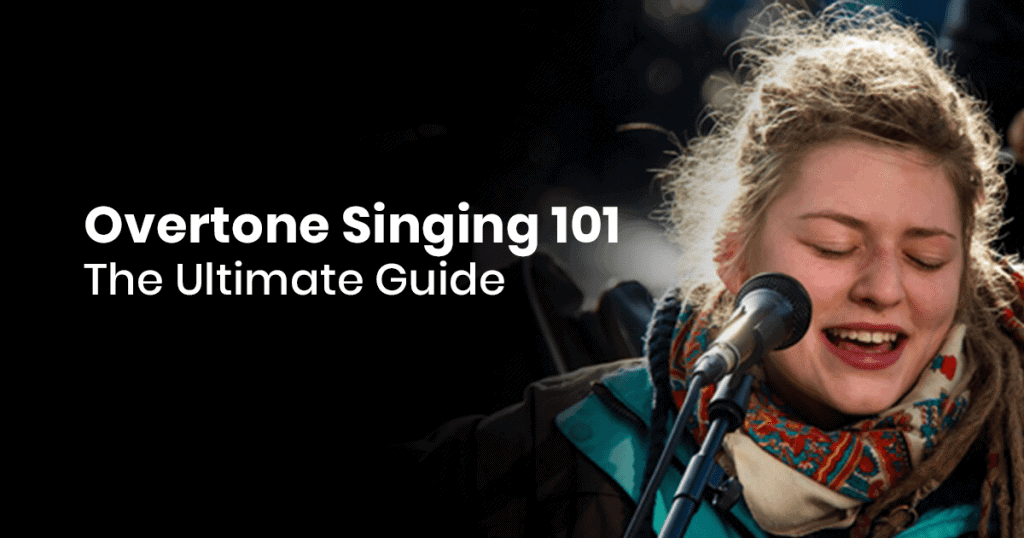Overtone singing is something you’ve probably heard in action without knowing that it had a name.
It’s basically when the singer manipulates resonances that are produced in their vocal tract, and this is done to produce a melody.
It’s been called “throat singing” and it enables the singer to sing two notes simultaneously.
Is overtone singing a talent you’re born with?
While it seems like a talent someone’s gifted with, it’s actually a skill anyone can learn to do! As Futurism reports, changing how you shape your mouth and place your tongue when you sing can produce both a high and low note at the same time.
It’s quite incredible! Here’s everything you should know about overtone singing and how it’s done.
How Do Singers Learn Overtone Singing?
For a singer to learn overtone singing, they have to go through quite a few steps, as musical artist Jim Cole tells Futurism.
They begin by singing high-pitched overtones that sound like whistles.
In order to do this correctly, the sides of the singer’s tongue should be curved upwards and held against the upper premolar teeth.
It’s important to place the tongue against the roof of the mouth but leave a small opening so that air can still move through.
If the singer wants to sing higher overtones, they should move their tongues forward a bit.
By raising the tongue and placing it in that way while singing, the vocal tract becomes split into two resonators – but they’re different ones.
So, you can get two separate sounds and pitches at the same time.
Where Does Overtone Singing Come From?

It’s said that overtone singing originated among the indigenous Turko-Mongol tribes of southern Siberia and western Mongolia, two communities that form part of the cultural region of Inner Asia, as Britannica explains.
However, overtone singing has been used by cultures in Asia for many generations.
One of the most famous examples of overtone singing is throat singing, and in this type of overtone singing the fundamental pitch will be very low, as Take Lessons explains.
However, this type of singing is certainly not reserved for specific people or regions in the world.
Overtone, or throat, singing has been found in various cultures all over the world, although the singing does vary a bit from one region to the next.
You can find overtone singing in the Xhosa culture of South Africa, the Inuit culture of Canada, and the Tuva culture in the Russian Republic.
Tibetan Buddhist monks of the Dge-lugs-pa sect also use a form of throat singing during their ritual performances, while people on the Italian island of Sardinia use throat singing in their polyphonic styles of singing.
Famous Overtone Singers
There are quite a few famous musicians who make use of overtone singing.
An example is a German singer Anna-Maria Hefele, who also offers a few lessons on YouTube for how to do it.
She’s been studying throat singing for over a decade. She’s so good at overtone singing that the video of herself doing it went viral!
The one is a low note and the other sounds more like a whistle.
If you didn’t know that she was singing two notes, you’d think that someone was playing the flute to accompany the one-note she was singing, that’s how amazing it is to hear a human being create such a sound.
Other overtone pros include contemporary classical composers, such as German composer Karlheinz Stockhausen and Australian composer Sarah Hopkins, who is renowned for her harmonic overtone singing.
Although you might not recognize them, there are non-traditional overtone singers such as the following that you might’ve seen in the media or whose work you’ve heard.
- David Hykes, a composer who has done film trailer music for popular movies such as X-Men: The Last Stand.
- Baby Gramps, a folk musician.
- Ray Anderson, a jazz singer, and trombonist.
- Joey Walker, an Australian rock musician.
- John Hammink, who’s both a singer and an engineer. He actually used types of throat singing to test Skype’s audio quality!
The Benefits Of Overtone Singing

With all the people around the world and in different cultures who practice overtone singing, there must be benefits to doing it – and there certainly are therapeutic benefits associated with overtone singing.
- It’s been said to have a hypnotic effect on both the performer and listener, which can feel like entering into meditation. This, in turn, has a calming effect.
- Interestingly, as Harmonic Sounds reports, the overtones can help to balance the two parts of the brain. On the one hand, its precise proportions of the overtone scale can engage the logical left-side brain. On the other hand, its musical expression can engage the more creative right-sided brain.
- Using both the left and right sides of the brain is beneficial to help you increase your attention and focus. This works well with the idea of being in the present moment, which is integral in overtone singing.
- Overtone singing is considered to be so calming that you can find many meditation videos online that make use of it. You can check some of them out here.
- There’s no doubt that the human voice is healing, and singing specifically. Think of how babies are lulled to sleep by humming, for example. But the benefits of singing go much deeper. Singing, in general, is so powerful for the brain that it can boost one’s memory and alertness by bringing more oxygen-rich blood to the brain. The Alzheimer’s Society even has a singing program to help people with dementia preserve their memory and improve their concentration, as The Chicago Tribune reports.
- Singing low notes is especially healing. Low pitches relax the nervous system and if you can hold that sound it gives you what’s known as an internal massage that can relieve muscle tension in the body, as reported by The British Academy of Sound Therapy.
- When it comes to overtone singing, both a low and high pitch are sung simultaneously. Focusing on how to do this has an interesting benefit: it keeps you present in the moment, which in itself is meditative and calming. In addition, there’s a surprising benefit to being present: it can relieve pain.
- As Psychologies reports, bestselling author and wellbeing expert Sandy C. Newbigging has the philosophy that spending more time in the present moment and tuning into our inner peacefulness can reduce our pain and ease suffering because we are at peace with our minds regardless of what is happening in our surroundings.
Benefits Of Overtone Singing For Singers

There are extra benefits in trying overtone singing if you’re a musician.
It can actually benefit you in your career or hobby because it makes you more aware of vocal colors and can develop your vocal cord closure, as Anna-Marie Hefele tells Voice Council.
She goes on to say, “[You] are also able to expand your range and find higher notes because you train to have the physical power for it.”
So, it’s definitely worth trying if you’re a musician.
Related Questions
Can throat sing damage your vocal cords?
You should avoid straining your voice in general. So practice healthy vocal habits. Take breaks and soothe your throat, such as by drinking hot tea with honey.
Strained or damaged vocal cords can harm your singing voice and even affect surrounding organs such as the ears and nose, as Paste reports.
Do vowels make a difference in how well you overtone sing?
Yes, they do. Vowel sounds fine-tune the overtones. So, the lowest overtones will be achieved with tight “oo” sounds.
If you want higher overtones, these will be done by vowel changes from “oo” to “oh, awe, ah, aa, ay, ee,” and everything in-between, as Spectral Voices reports.
Conclusion
Overtone singing is quite a remarkable thing, and what’s even more amazing is that anyone can learn how to do it with enough practice and dedication.
It’s clear that singing, in general, has many benefits for the body, and this article has also touched on the specific benefits that can be gained from overtone singing.
Go on and give it a listen or try it out yourself – it will surely help you relax and meditate!

